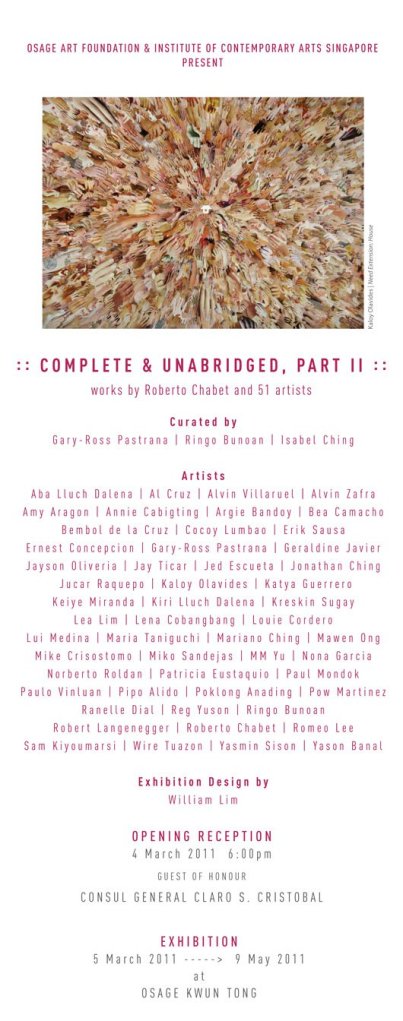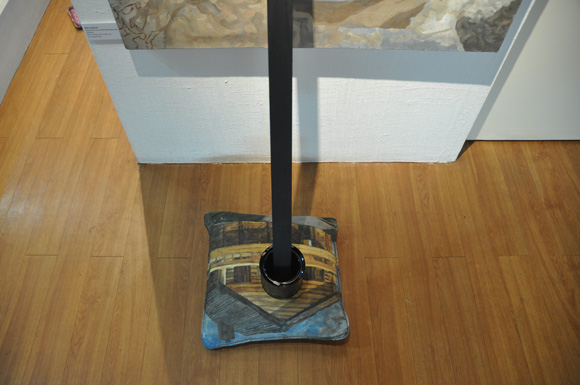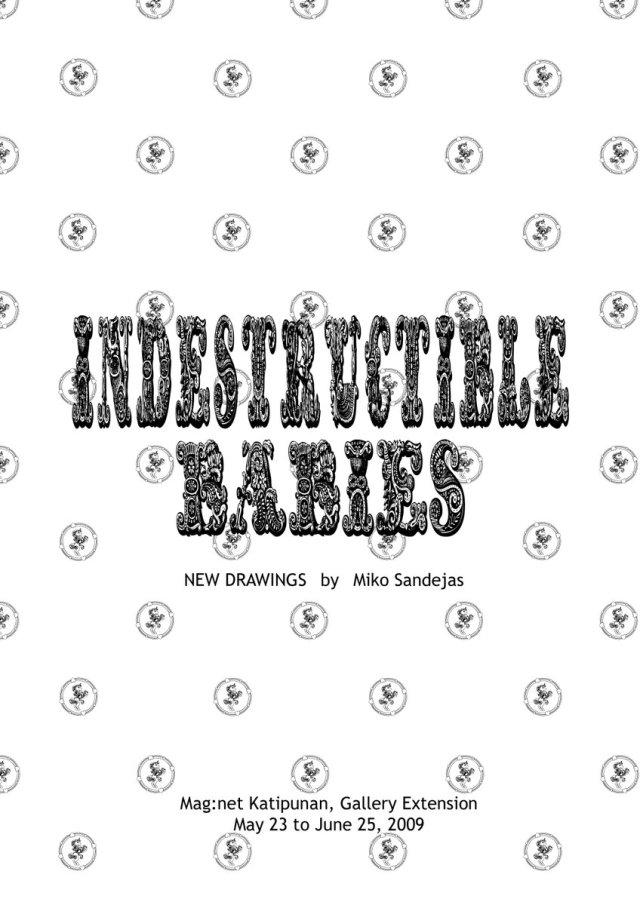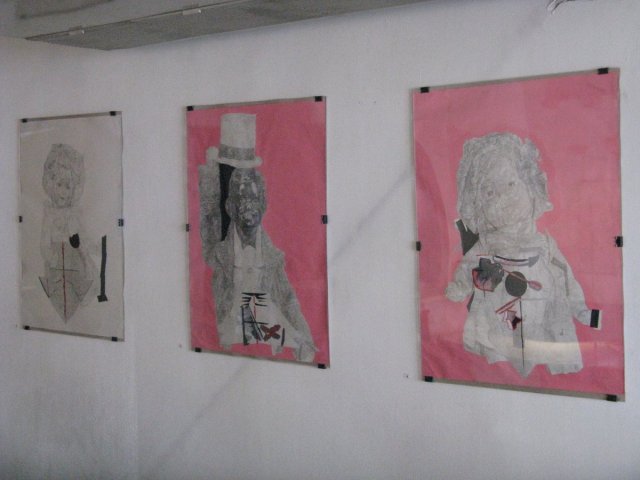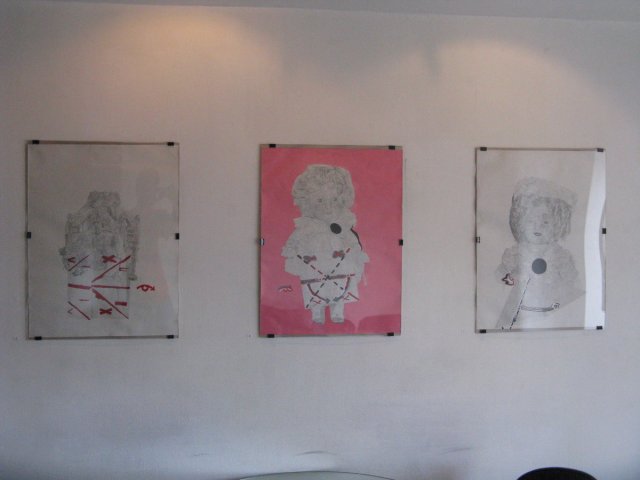
This was a statement prepared on a photo installation from Miguel Sandejas, Taren Lulu, and Fanshen Peteros for a project on popular art and culture
Shitting, pissing, puking, and other private matters happen in a public toilet amidst the hustle and bustle of urban crowds and structures in anonymity. Graffiti in a public stall isn’t so out of place to the urban dweller as well. Like other public toilet activities therein, reading and making of graffiti occur in hidden and in private, amidst the movements of crowds.
According to Charles Baudelaire, experiencing the modern city is akin to that of a stroller. a loafer, or a flaneur. The flaneur moves through the city as in labyrinth. He moves through its streets, hidden spaces, and crowds in anonymity. Strolling connotes a leisurely pace to observe, to read, and even to write. In strolling, the flaneur is said to experience the fearful pleasures and attractions of the city. Bathroom graffiti and public bathrooms are among those hidden spaces of the city. Viewing and making bathroom graffiti are among those fearful pleasures that strolling through the city affords.
Graffiti found in public toilet stalls are like ejected matter or waste, like the dirt and fluids people deposit from their bodies. They pertain to the flesh, in that base matter sort of way. But in another sense, it is of the flesh, the human or sinful nature; all that is ignoble, hidden, embarrassing, and shameful.
These particular inscriptions occur here for a reason. The site accommodates their becoming. The privacy and anonymity of a public bathroom allow this use or abuse; to dish out the dirt, to rage, or to be one’s cheekiest self. It’s walls are the opposite of sacred taking in the dirt and slime of urban being. Like the back of a public bus seat, it becomes a person’s confessional of his worst and potentially embarrassing. There’s a saying that from out of the mouth, the heart speaks. Upon bathroom walls, people reveal a bit of themselves in a fashion they may not otherwise. Unlike the wall’s of buildings and bridges, these messages are for the most part secrets or intimate in intention. Care for a rendezvous? Call this number. I am guessing that these are also impulsive on many occasions; a product of boredom.
People may ignore them, but there is a fascination similar to reading a dirty secret, to listening to a lewd joke, to laughing at the rantings of a lunatic, and to finding something unexpected. As Joan Rivers said most recently, “I’m going to watch Charlie Sheen at Radio City Music hall, just to hear what screwball thing he says next.” We enjoy taking these crazy things in. For the most part, these are considered inconsequential nothings. In other words, they are nothing to be meditated upon. Some questions come to mind. Why is this impulse to look, however obscene, compelling or tantalizing? Why are they embarrassingly interesting to look at?
For one, public bathroom graffiti can be sexually charged. It is blatant and ridiculous in it’s declarations and revelations. And if we think of Baudelaire’s idea of the flaneur, these psychological or imaginary spaces; are potentially fearful yet pleasurable to a visitor. The reader is a voyeur into these dark spaces. They belong to crowds; the whispers of anonymous walkers.
At a men’s toilet at the Faculty enter of the University of the Philippines, I took notice of what some people had written on the walls: some philosophies on life; calls to action; lewd confessions; telephone numbers; invitations to a rendezvous, and other inscriptions. These were things that people left behind; their waste, to be covered up by a re-paint after a few months or so.
Susan Sontag comments in her essay called “On Photography”. ‘The photographer is an armed version of the solitary walker reconnoitering, stalking, cruising the urban inferno, the voyeuristic stroller who discovers the city as a landscape of voluptuous extremes. Adept of the joys of watching, connoisseur of empathy, the flâneur finds the world ‘picturesque.’ (pg. 55) Photography is an apt way of actively experiencing these spaces of the city. It is was obvious measure to take.
I thought of collecting them as photos and transplanting them. Taking bathroom graffiti from being of little value or little interest as a means to transform the experience of the pedestrian. Transplanting them as a photographs into the broad day-lit paths of pedestrians would for one create an anonymous voyeuristic experience apart from their routine. A goal would be to affect routines of passersby and reveal the familiar yet hidden experience of bathroom graffiti; something that is a part of their geography.
The sites: the stairwell of a university building can be a likely stage or a meeting place for an audience. This stairwell has a bulletin board with posters, announcements, advertisements, and the like. These are posts of images and text that people, students and faculty, pass and read every day. This would serve as the new site for photos of bathroom graffiti. The graffiti to be re-viewed will be from the bathrooms of the same building and similar buildings around the university campus. These are bathrooms that are repositories of layers, messages, paint, and scrawlings from people who inhabited the building throughout decades past. Potentially, the people who made them are the same people who pass the stairwell to stop and view its bulletin board. This served as one underlying logic why the stairwell was chosen. That is the graffiti represent habits and thoughts not only of specific people but of a populace.
A bulletin board follows certain rules that the bathroom walls do not. What sort of transformation would lifted graffiti from the bathroom stalls produce in a new and incongruous setting? How would passersby respond to perhaps familiar and somewhat private or isolated inscriptions transplanted into a more public stage? Note that they would be isolated in a way that they are cropped, hidden at first amongst the information noise from a plethora of posts but jutting out due to a difference from the normal content, format, and configuration.
We thought of people recognizing some of the images and deciphering layers of writing captured in the photographs. In the least, I had hoped it would be an amusing experience to see something familiar, but transplanted and out-of-place. Perhaps they may recognize their own thoughts they secretly wrote laid bare. ‘Welcome to Hell’, said one photograph. ‘How do I initiate a make-out session?’, pleaded another.
The Process: I believe that there is a transformation and a transgression of the familiar by way of pitting two spaces or surfaces together. One is a bulletin board in juncture or a transit in between classrooms. The other are the walls and stalls of a public bathroom. People interact with both spaces in part by reading and looking. One does not accommodate the information of the other.
I had asked random people to go into the bathrooms (particularly that of the ladies which I could not enter) and take photos of graffiti. I had no control over the selection or initial cropping of the images. The surprise of seeing what images they took was a pleasure. There were surprises. It was interesting to see what they chose. It seemed to me that some of the choices were familiar, like friends or inside jokes among the ladies that frequent the bathrooms. In the end, we printed all the images selected, changing little.
There would be no overall guiding rationale of selection in taking the photos; the more random the better. I employed a technique of asking ladies to take any 5 photos of vandals in their bathrooms. From there selection would be in our hands. We had gathered about 40 digital photographs.
The bulletin board was transformed into another object. It was no longer just a bulletin board. This was brought on by scheming; the breaking of its rules of privilege. We knew that only certain kinds of official sanctioned information are allowed on it. There was no asking permission if we could post on the bulletin board. We had planted hidden information. Our installation was not blatant. Was this also vandalism? To authorities perhaps. It is also a foil to vandalism, if look at the term’s historical meaning. Vandalism was the destruction of classical works of art blamed on the Vandals. We had turned a bulletin board, vandalism by sheer crassness, into a funny and thought-provoking exercise. We hoped that the object and experience would be thought-provoking and funny to the passersby too.

The photos of graffiti we argued would act as artefacts of disruption; tools (a wrench thrown into known gears of conveyance) or cards in game. The game board is the physical and ideological surface of the bulletin board; a space of privileged information subject to censorship. There can be no productive idea of subjectivity without a state of antagonism (2), the imposing image of the other, the nagging necessity of exclusion. Here an antagonist relationship between two kinds of information; private and public, hidden and approved. Two sources of relevant information and one audience; a body of students.
Consider this new object a product and equivalent/avatar or the underbelly of advertising; its detritus, noise, and waste. Cubist experiments made use of similar material and information – bits and slices of information from sources like handwriting, newsprint, and colored and textured paper.
The arrangement of the photos or selections were done in an ordered configuration on the bulletin board. The photos were pasted in a configuration – straight line across it. They consisted of cropped images of handwriting and peeled off paint on A4 sized photographs arranged in a line. We had other options, but an X configuration across the surface seemed too blatant. In these actions, I think there is that awareness that the bulletin board could become a painting / collage. Think of it as an object of melded or unified bits, where legibility or reading of separate bits and pieces of posters and photographs is no longer the focus. It becomes a single abstracted object. We were exhibiting photographs on a board that is not for that purpose and turning the bulletin board into a space for the artistic display of photographs.
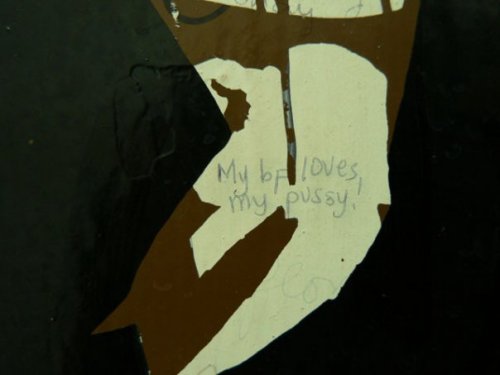
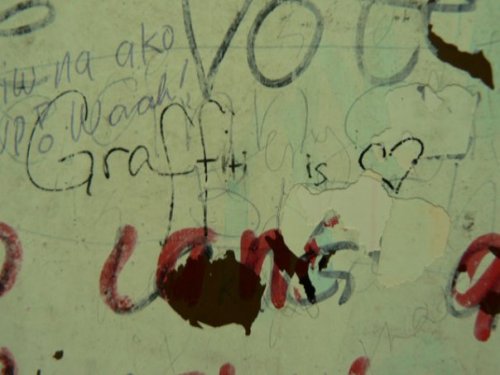
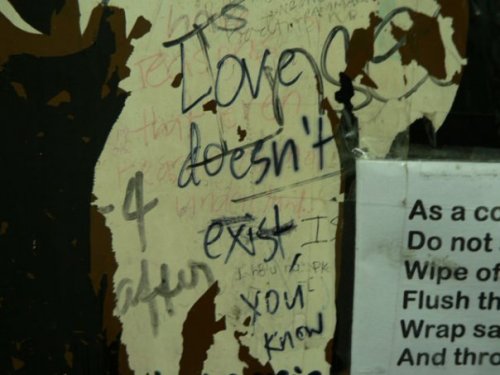
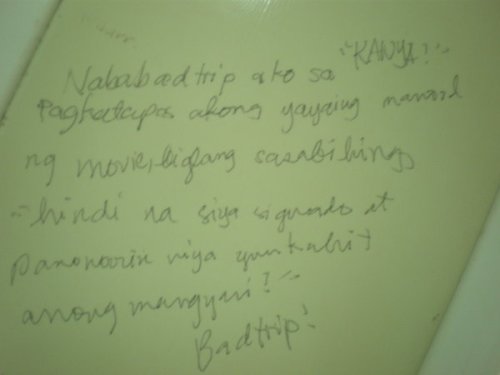
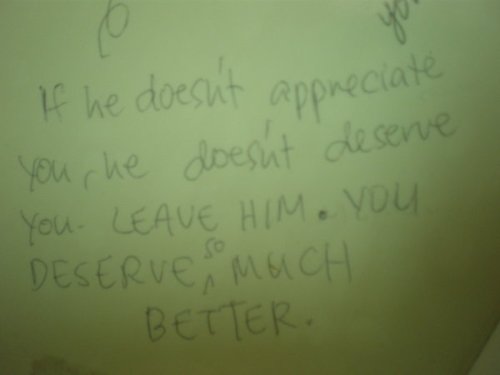
1. Jospeh Hart, A new Way of Walking (Utne Reader, July/August 2004)
2. Nicolas De Oliveira, Installation Art (London: Thames and Hudson, 1996) 27
3. Claire Bishop, Relational Aesthetics and Antagonism (Mass: October 110, 2004) 66
4. Susan Sontag, On Photography (New York: Farrar, Strauss,and Giraud, 1977) 55
